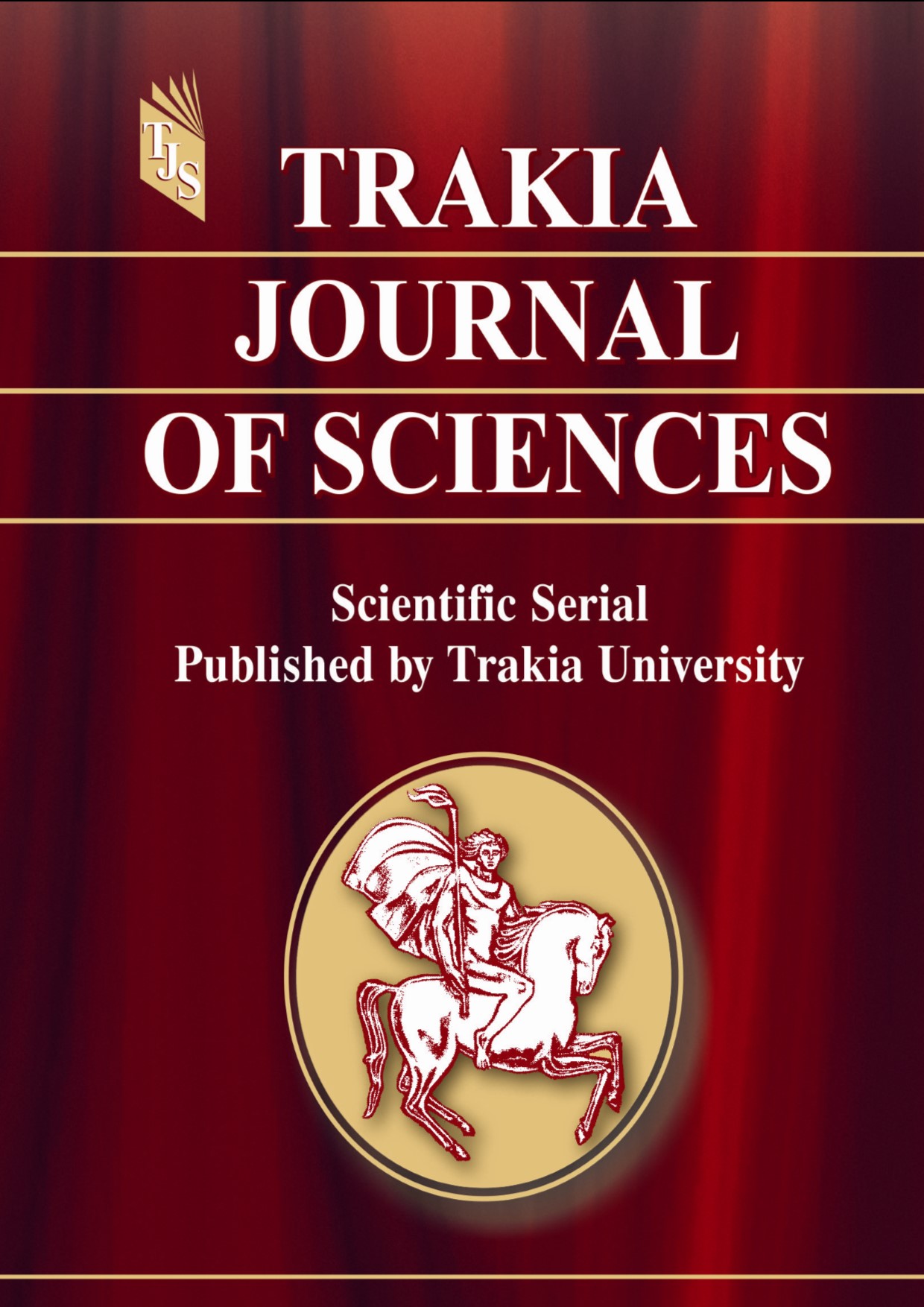RESEARCH DATA ON THE PREVALENCE OF HEPATITIS C VIRUS ANTIBODIES AMONG INPATIENTS AT A HOSPITAL IN CENTRAL BULGARIA: 2021 – 2022
DOI:
https://doi.org/10.15547/tjs.2024.03.005Keywords:
anti-HCV, prevalence, screeningAbstract
Introduction and purpose: Hepatitis C Virus (HCV) infection is a leading cause of chronic liver diseases including cirrhosis and hepatocellular carcinoma. There is insufficient data on the prevalence of HCV among hospitalized patients. Targeted testing for anti-HCV is an effective strategy for identifying asymptomatic infected individuals. The purpose of the present study was to present the results of screening for anti-HCV among inpatients at a hospital in Central Bulgaria.
Methods: A total of 3275 serum samples from 1968 men and 1307 women were tested for presence of anti-HCV at the Laboratory of Virology within the Multidisciplinary Hospital for Active Treatment (MHAT) “Uni Hospital” (Panagyurishte, Bulgaria) in the period 2021-2022. Serological analysis based on the ELFA method was performed using VIDAS Anti-HCV automated test (BioMerieux, France).
Results: Thirty-two of the tested patients (1.0%; 95% CI 0.6%-1.3%) were HCV positive. The difference between the numbers of the hospitalized (n=29) and the outpatients (n=3) was notable. The sex distribution shows that 53.1% were men and 46.9% were women. Their median age was 67 years (IQR 56-75), as the involvement of the age group 60-79 years (n=16) was predominant. A total of eight patients were diagnosed with hepatic cirrhosis, whereas three more patients had hepatocellular carcinoma.
Conclusions: We found a low level of the prevalence of anti-HCV (1%) among the patients of MHAT “Uni Hospital”, which is analogous to the level reported in the general population. We detected a higher incidence of HCV-positive serostatus among the older in comparison to younger age groups. Timely diagnosis and referrals to a gastroenterologist help to avoid progression of liver damage. All viremic patients (HCV RNA) require early access to modern antiviral therapy.
References
Mühlberger N, Schwarzer R, Lettmeier B et al. HCV-related burden of disease in Europe: a systematic assessment of incidence, prevalence, morbidity, and mortality. BMC Public Health, 9:34, 2009.
World Health Organization. Hepatitis C. June 2022. Available from: https:// www. who. int/ news-room/fact-sheets/ detail/ hepatitis-c.
Liakina V, Hamid S, Tanaka J, et al. Historical epidemiology of hepatitis C virus (HCV) in select countries - volume 3. J Viral Hepat, Suppl 4:4-20, 2015.
Pentchev C, Petkova M, Alargkof V, Boyanova et al. Up-to-date Epidemiology of Chronic Hepatitis C Virus Infection among Bulgarian Patients: a Single Centre Experience, C R Acad Bulg Sci, 2: 188–196, 2024.
European Centre for Disease Prevention and Control. Systematic review on hepatitis B and C prevalence in the EU/EEA. Stockholm: ECDC; 2016. Available from: http:// ecdc.europa.eu/ publications-data/systematic-review-hepatitis-b-and-c-prevalence-eueea.
Polaris Observatory HCV Collaborators. Global prevalence and genotype distribution of hepatitis C virus infection in 2015: a modelling study. Lancet Gastroenterol Hepatol, 3:161-176, 2017.
Daw MA, El-Bouzedi AA, Ahmed MO et al. Geographic integration of hepatitis C virus: A global threat. World J Virol, 4:170-182, 2016.
Dustin LB, Bartolini B, Capobianchi MR, Pistello M. Hepatitis C virus: life cycle in cells, infection and host response, and analysis of molecular markers influencing the outcome of infection and response to therapy. Clin Microbiol Infect, 10:826-832, 2016.
Pekova LM, Teocharov P, Sakarev A. Clinical course and outcome of a nosocomial outbreak of hepatitis C in a urology ward. J Hosp Infect, 1:86-91, 2007.
Zoulim F, Chevallier M, Maynard M, Trepo C. Clinical consequences of hepatitis C virus infection. Rev Med Virol, 1:57-68, 2003.
Pawlotsky JM, Ramers CB, Dillon JF et al. Simplification of Care for Chronic Hepatitis C Virus Infection. Semin Liver Dis, 4:392-402, 2020.
Centers for Disease Control and Prevention (CDC). Testing for HCV infection: an update of guidance for clinicians and laboratorians. MMWR Morb Mortal Wkly Rep, 18:362-5, 2013.
Rongey CA, Kanwal F, Hoang T et al. Viral RNA testing in hepatitis C antibody-positive veterans. Am J Prev Med, 3:235-8, 2009.
Jovanovic MR, Miljatovic A, Puskas L et al. Does the Strategy of Risk Group Testing for Hepatitis C Hit the Target? Front Pharmacol, 8:437, 2017.
Chou R, Dana T, Fu R et al. Screening for Hepatitis C Virus Infection in Adolescents and Adults: Updated Evidence Report and Systematic Review for the US Preventive Services Task Force. JAMA,; 10:976–991, 2020.
Coward S, Leggett L, Kaplan GG, Clement F. Cost-effectiveness of screening for hepatitis C virus: a systematic review of economic evaluations. BMJ Open, 9:e011821, 2016.
Majumdar A, Kitson MT, Roberts SK. Systematic review: current concepts and challenges for the direct-acting antiviral era in hepatitis C cirrhosis. Aliment Pharmacol Ther, 12:1276-92, 2016.
Kevorkyan A, Teoharov P, Lernout T et al. Prevalence of HBV and HCV among outpatients in the Plovdiv region of Bulgaria, 2010-2011. J Med Virol, 3:401-6, 2015.
Turhanoğlu M, Onur A, Bilman FB et al. Eight-year seroprevalence of HBV, HCV and HIV in Diyarbakir training and research hospital. Int J Med Sci, 11:1595-601, 2013.
Anwar WA, El Gaafary M, Girgis SA et al. Hepatitis C virus infection and risk factors among patients and health-care workers of Ain Shams University hospitals, Cairo, Egypt. PLoS One, 2: e0246836, 2021.
Akiyama MJ, Kaba F, Rosner Z et al. Hepatitis C Screening of the "Birth Cohort" (Born 1945-1965) and Younger Inmates of New York City Jails. Am J Public Health, 7:1276-7, 2016.
Mele A, Tosti ME, Spada E et al. Epidemiology of acute viral hepatitis: twenty years of surveillance through SEIEVA in Italy and a review of the literature. 2006 v, 30 p. Rapporti ISTISAN 06/12. Online: https://www.iss.it/documents/20126/45616/06-12.1149070762.pdf/4cf33f44-98eb-3234-6939-add18587e9e5?t=1581098286630
Novo-Veleiro I, Alvela-Suárez L, Chamorro AJ et al. Alcoholic liver disease and hepatitis C virus infection. World J Gastroenterol, 4:1411-20, 2016.
Llamosas-Falcón L, Shield KD, Gelovany M et al. Impact of alcohol on the progression of HCV-related liver disease: A systematic review and meta-analysis. J Hepatol, 3:536-546, 2021.
Desbois AC, Cacoub P. Diabetes mellitus, insulin resistance and hepatitis C virus infection: A contemporary review. World J Gastroenterol, 9:1697-1711, 2017.
Mehta SH, Brancati FL, Sulkowski MS et al. Prevalence of type 2 diabetes mellitus among persons with hepatitis C virus infection in the United States. Ann Intern Med, 8:592-9, 2000.
Garcia-Compean D, Jaquez-Quintana JO, Gonzalez-Gonzalez JA, Maldonado-Garza H. Liver cirrhosis and diabetes: risk factors, pathophysiology, clinical implications and management. World J Gastroenterol, 3:280-8, 2009.
Benova L, Mohamoud YA, Calvert C, Abu-Raddad LJ. Vertical transmission of hepatitis C virus: systematic review and meta-analysis. Clin Infect Dis, 6:765-73, 2014.
Dimitrova M, Kamusheva M, Mitov K et al. Screening and diagnosis of chronic HCV in Bulgaria: a review of the current practice. BioMedical Res, 29:2846-53, 2018.

Downloads
Published
Issue
Section
License
Copyright (c) 2024 Trakia University

This work is licensed under a Creative Commons Attribution-NonCommercial 4.0 International License.


